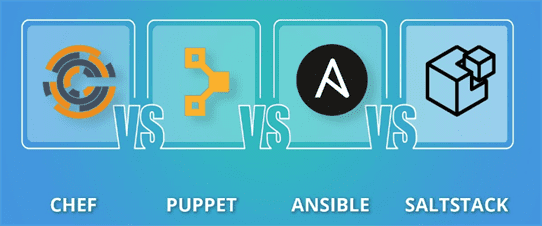Tag: Deployment
Using Ansible in DevOps: A Beginners Guide
Introduction
Ansible is a system of configuration management written in Python programming language which uses a declarative markup language to describe configurations. It’s used for automation of configuration and OS setup. Ansible is often used to manage Linux-nodes, but Windows is also supported. It supports work with devices with Python v2.4 and higher installed through SSH connection. In this article, we are going to review the DevOps tool called Ansible.
Kubernetes vs. Docker Swarm: A Comparison
In this tutorial, we will be reviewing what the fundamental similarities and distinctions are between Kubernetes and Docker Swarm. Kubernetes and Docker are two of the major players in container orchestration. Both Kubernetes and Docker Swarm continue to grow in popularity as they are increasingly used by those working with container deployment, orchestration, and management. Across all vertical markets, businesses continue to find new methods of utilization and practice with more uses constantly being discovered.
How to Install and Use Containerization
What is Containerization?
Containerization is a form of virtualized operating system developed as a response to the many problems of hardware-level virtualization. Because the latter runs a full-blown guest operating system, it is very resource-intensive and incurs a significant amount of overhead, but containerization is much lighter. Since the containers share the host machine’s kernel, the resources are not wasted on running separate operating system tasks. This allows for a much quicker and lightweight deployment of applications.
Which one is appropriate for you?

Table of Contents
I. Puppet
II. SaltStack
III. Chef
IV. Ansible
IV. Conclusion
Introduction
Configuring a single server with the required software is a reasonably simple task. However, if numerous servers need to have the same or similar software and configurations installed on them, the process would use numerous man-hours to complete, which would deplete your already strained resources. Without some form of automation, this task can become nearly insurmountable. With this task in mind, new configuration management tools were developed to address the need to deploy new servers with premade configurations and updates, that allowed for a smoother and more manageable automation process. To keep these servers syncing and to manage updates across a broad swath of hosts in a data center or cloud environment, automation tools like Puppet, SaltStack, Chef, and Ansible meet this need.
How to Install Istio
What Is Istio?
Istio is an open-source service mesh that makes it easier for a team to create a network or server cluster of deployed services. Istio provides several vital services consistently across a mesh network such as:
What is Chef?
Chef is a popular, open-source, IaC (Infrastructure as Code) management tool. It eases administration, configuration, and deployment of server resources across a network from a central location.
Installing Jenkins on Ubuntu 16.04
What Is Jenkins?
Jenkins is an open source automation server software developed in Java. It allows developers to integrate CI/CD (Continuous Integration/Continuous Delivery) pipelines within their organization that ease and automate workflows. It has an extensive help community, supports over 1000 plugins, allows users the ability to automate almost any task and, it saves significant time that can be better utilized addressing other issues.
Our Sales and Support teams are available 24 hours by phone or e-mail to assist.

